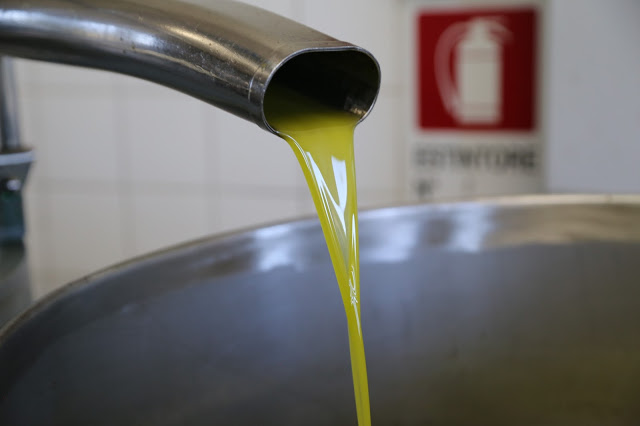
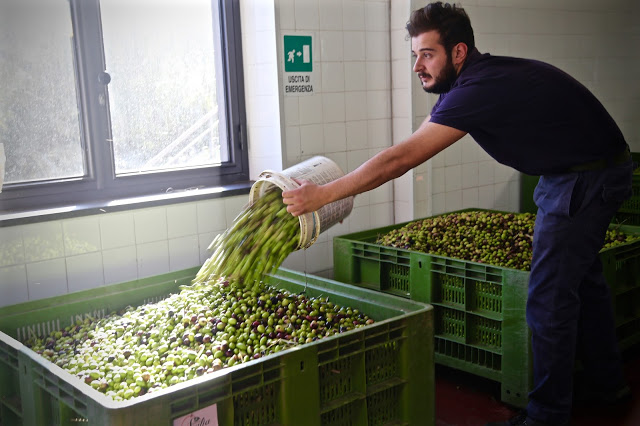
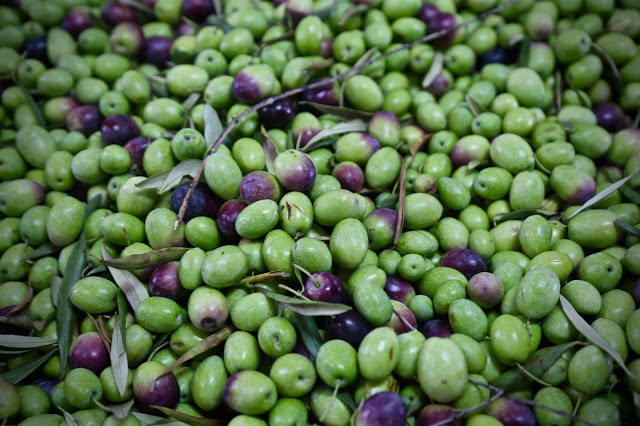
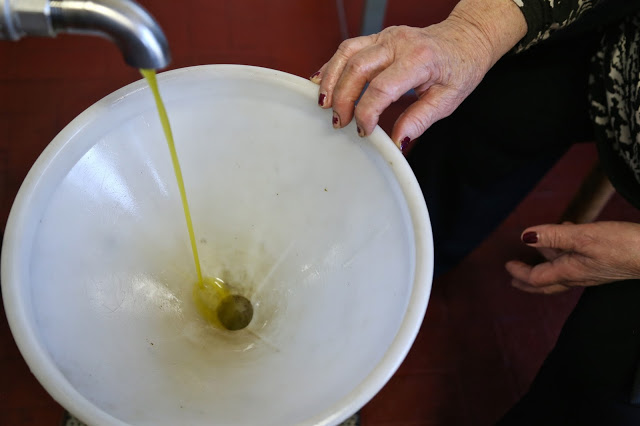
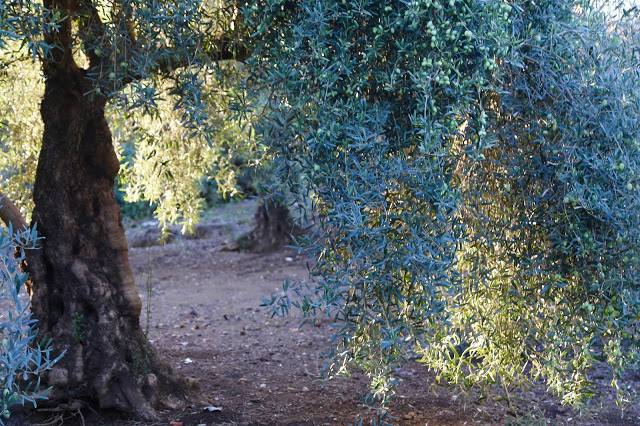
There is a crisis in the olive belt, the Mediterranean fertile crescent that spreads from the Lebanon, via Israel, through Greece, Southern Spain and Portugal, the South of France and Southern Italy, which could destroy olive oil production. The bacteria ‘Xylella fastidious’, which admittedly sounds like a spell from Harry Potter, is spreading rapidly through Italy, starting from Puglia, the largest olive oil producing area, where they are having to chop down trees that are hundreds of years old. The first symptoms started in Europe in 2013, but this year, in 2015, the disease has literally gone viral.
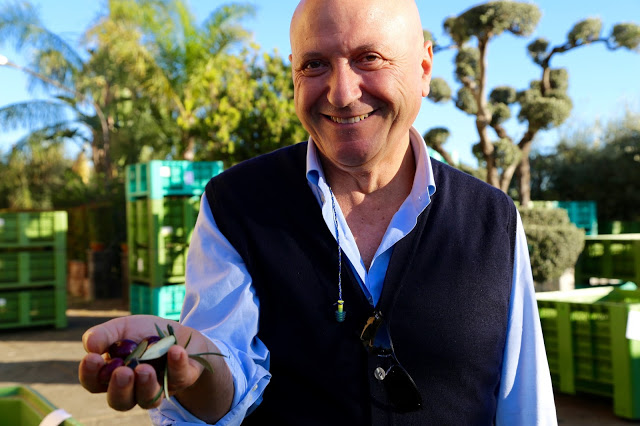
This past week, I visited Sicily, which as an island off the toe of Italy remains unaffected so far. I went to find out about Pomora, a start-up food business initiated by two British men, Alun Johns and Paul McGuigan, which aims to produce and distribute high quality olive oil. These guys are not your horny-handed sons of the soil but soft-pawed office types hailing from the world of IT and digital marketing. Alun worked for Amazon.co.uk and Paul for online sports merchandisers, their business experience is the detached and laundered world of online. But they wanted to get their hands dirty so together with two farmers – Carmelo Scalia, who lives in Catania, huddling under the rich mineral soil of Mount Etna, and Antonio from Campania, inland – Pomora form an interesting mash-up of the ancient and the sparkling new. Johns and McGuigan were inspired during a trip to Sicily by the quality of the olive oil.
“You can’t get olive oil like this in the supermarket in the UK,” Alun exclaimed.
They work in tandem with their olive farmers, ensuring a fair trade, sustainable market for the product, using an ‘adopt a tree’ system.
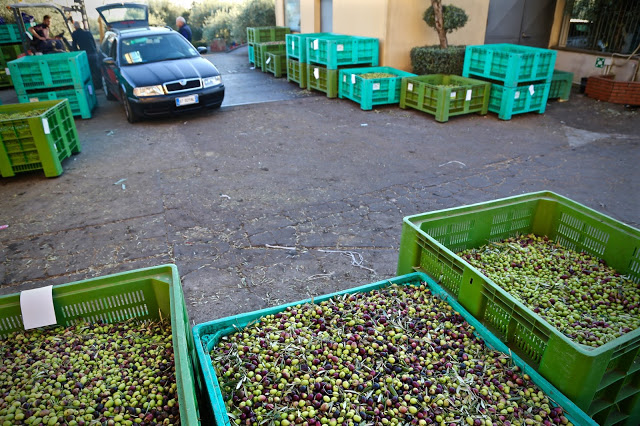
On a clear blue mid-November day, warm enough to wear a summer dress, I visited the Sicilian oil mill owned by Carmelo Scalia. The floor was bustling with farmers and crates of olives. Smallholders drove up with shopping bags of olives in the back of their car while bigger farmers emptied trucks of green and purple olives into crates. One man turned up with just two buckets of olives – the fruit of half a day’s work, enough for perhaps just a couple of litres of olive oil. No matter, the important thing is that it’s your oil, from your trees. Almost every family has their own olive patch. The farmers give 50% of their oil to Carmelo in exchange for using the mill for free.
The olive oil process:
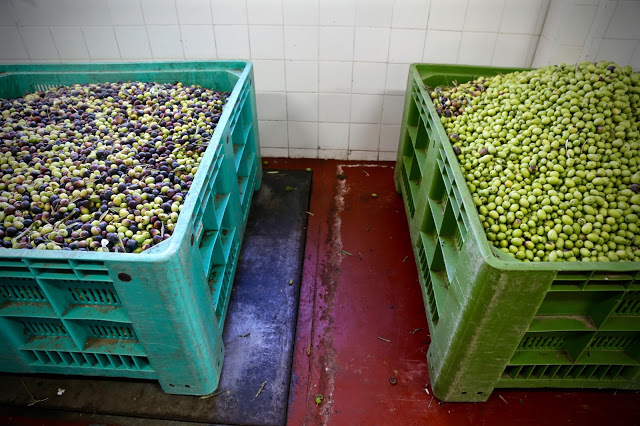
1. The olives are weighed. An average crate is around 200 kilos. This year, most of the olives are green with the odd purple one. Last year, due to the wet weather, almost the whole crop was purple, for they had ripened, having been left on the trees till later in the year. Olive oil from purple or black olives has a different flavour profile; it’s smoother, less bitter, fruitier.
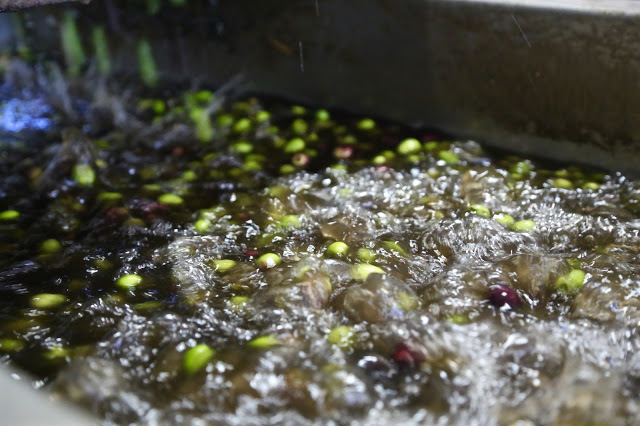
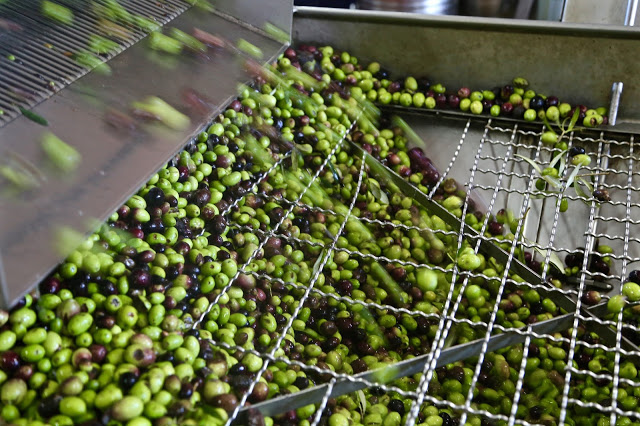
4. Then the olives are crushed, spitting out the gravel-like stones, separated out to use as fuel to power the machine.

5. The olives are ‘malaxed’, massaged, allowing tiny oil droplets to coalesce into slightly bigger droplets, which makes it easier to extract the oil and increases yields. It looks like a foliate green tapenade swivelling on huge metal screws. In this part of the process, which takes 20 minutes, the olives are covered with a thin gas layer of nitrogen or carbon dioxide to prevent oxidisation. Oxygen is the enemy of good olive oil. This is a delicate operation, for the machine must not heat up the oil or the olives in order to retain the benefits of cold pressing.
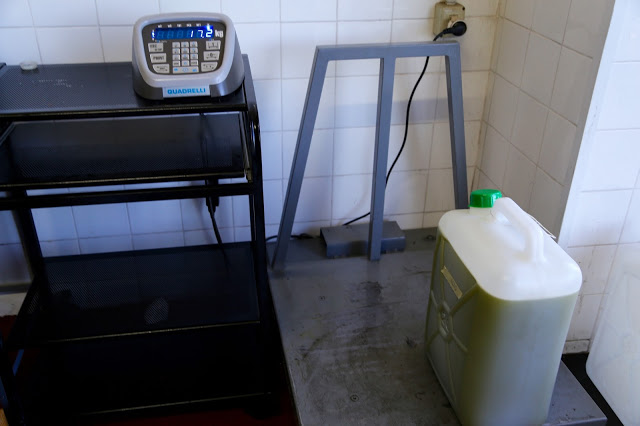
7. Lastly, the oil oozes from a tap into bottles or steel churns – thick, syrupy and verdant. The farmers then weigh how much oil they have extracted. From 200 kilos of olives, you get approximately 20 litres of olive oil. Once the oil has been collected at the end of the pressing process, it is put into large storage tanks (with any empty space in the tank filled with nitrogen rather than air to prevent oxidation) and allowed to settle (it’s not filtered). The longer you leave it to stand, the more of the tiny particles drop to the bottom and the clearer the oil becomes. You then bottle from a tap hole slightly above the bottom of the tank.
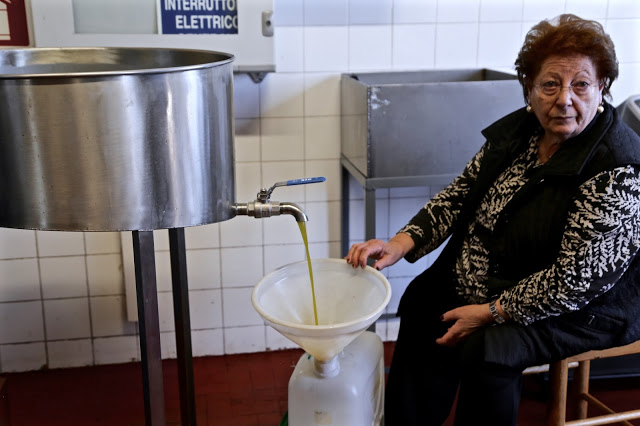
Sometimes there are fights between farmers (I saw a bit of a spat between two farmers’ wives) about when their oil starts and the other finishes. But each farmer’s olive batch is carefully labelled, the labels following the process along the machine route and there are gaps between each new farmer’s lot.
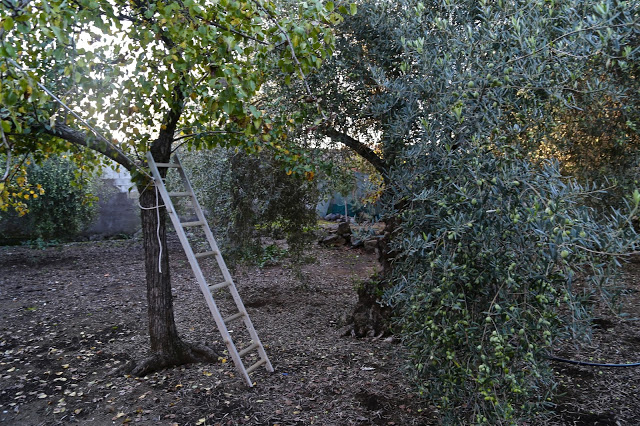




What a fabulous idea! I've added this to my Christmas wish list…
Thankfully this year's harvest is not, generally, as bad as last year's, due to a combination of favourable weather patterns… and indeed, I had a few bottles in my Christmas stocking (sotto l'albero) last year.